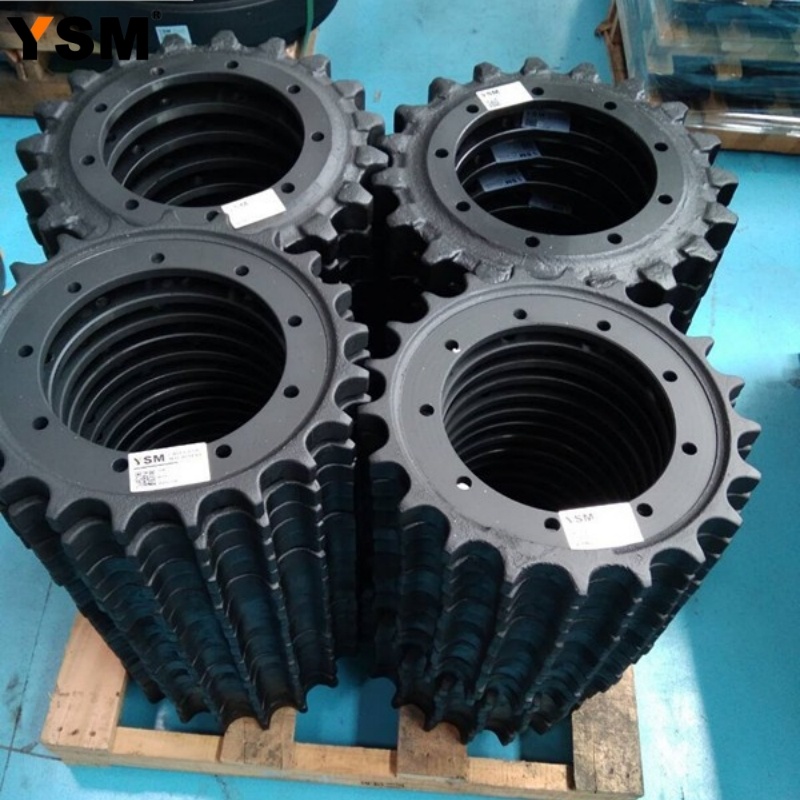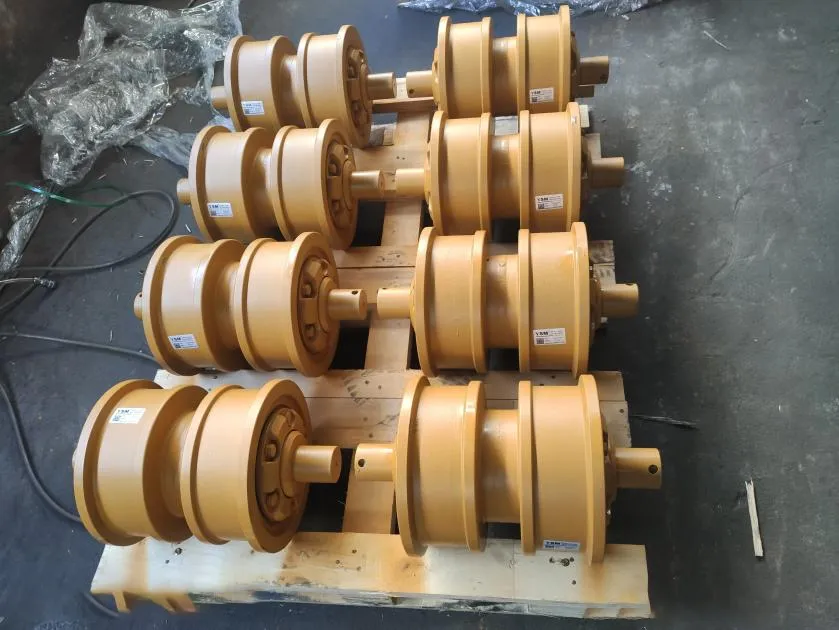Understanding H Links: The Backbone of Your PC30 Excavator's Engine System
Understanding H Links: The Backbone of Your PC30 Excavator's Engine System Table of Contents 1. Introduction to H Links 2. What Are H Links in an Excavator? 3. The Importance of H Links in the PC30 Engine System 4. How H Links Work in the PC30 Excavator 5. Common Issues with H Links 6. Maintenance Tips for H Links 7. H Links vs. Other Engine Components 8. Conclusio
Jul 19,2025

Understanding H Links: The Backbone of Your PC30 Excavator's Engine System
Table of Contents
- 1. Introduction to H Links
- 2. What Are H Links in an Excavator?
- 3. The Importance of H Links in the PC30 Engine System
- 4. How H Links Work in the PC30 Excavator
- 5. Common Issues with H Links
- 6. Maintenance Tips for H Links
- 7. H Links vs. Other Engine Components
- 8. Conclusion
- 9. FAQs
1. Introduction to H Links
In the world of excavators, the **PC30** stands out for its versatility and efficiency. At the heart of its engine system lies a vital component known as the **H link**. Understanding the function and significance of H links is crucial for anyone who owns or operates a PC30 excavator. This article delves into the intricacies of H links, shedding light on their role, maintenance, and the common issues that can arise.
2. What Are H Links in an Excavator?
H links are structural components that connect various parts of an excavator’s engine system. Specifically, they link the **piston rods** to the **crankshaft**, allowing the engine to convert linear motion into rotational energy. This connection is critical because it enables the excavator to perform its lifting and digging tasks effectively.
2.1 Design and Structure of H Links
H links are typically made from high-strength steel, designed to withstand the rigors of heavy machinery. Their unique shape resembles the letter "H," which enhances their strength while minimizing weight. This design is crucial, as it allows for efficient power transfer without compromising structural integrity.
3. The Importance of H Links in the PC30 Engine System
The role of H links in the PC30 excavator's engine system cannot be overstated. They are pivotal in ensuring that the engine operates smoothly and efficiently. Here are several reasons why H links are essential:
3.1 Power Transfer
H links facilitate the transfer of power from the engine's combustion process to the machinery's operational parts. Without a reliable H link, the efficiency of power transfer could be significantly diminished, leading to performance issues.
3.2 Stability and Control
The stability provided by H links ensures that the excavator maintains control during operation. This stability is crucial, especially when handling heavy loads or working on uneven terrain.
3.3 Longevity of the Engine
Properly functioning H links contribute to the overall longevity of the excavator's engine. By minimizing wear and tear on other components, they help maintain an optimal balance within the engine system.
4. How H Links Work in the PC30 Excavator
To understand H links better, we must look at their operation within the context of the PC30's engine system. When the engine ignites fuel, it creates a rapid expansion of gases, pushing the piston downwards. This downward motion is transferred through the H link to the crankshaft, converting it into rotational motion that drives the excavator's movement.
4.1 The Role of H Links in Engine Cycles
In a typical engine cycle, the H link plays a crucial role during the power stroke. The efficiency and timing of this process are critical for optimal engine performance. If the H link fails to perform correctly, it can lead to misalignment or even catastrophic engine failure.
4.2 Interaction with Other Components
H links do not operate in isolation; they interact with various components such as the crankshaft, connecting rods, and pistons. Understanding this interaction is vital for troubleshooting and maintenance.
5. Common Issues with H Links
Despite their robust design, H links can face several issues that may impact their performance. Identifying these problems early can prevent costly repairs and downtime.
5.1 Wear and Tear
Over time, H links can experience wear and tear due to constant movement and high pressure. Signs of wear include unusual noises and reduced engine performance.
5.2 Misalignment
Misalignment can occur due to improper installation or damage. This issue can lead to inefficient operation and increased stress on the engine components.
5.3 Corrosion and Damage
Corrosion can weaken H links, especially in environments with high moisture or exposure to chemicals. Regular inspections are essential to detect any signs of damage.
6. Maintenance Tips for H Links
Maintaining H links is crucial for the longevity and performance of your PC30 excavator. Here are some practical maintenance tips:
6.1 Regular Inspections
We recommend conducting regular inspections of the H links to identify any signs of wear, misalignment, or corrosion. Early detection can save you from extensive repairs.
6.2 Lubrication
Proper lubrication of H links is essential to reduce friction and wear. Ensure that you use high-quality lubricants and follow the manufacturer's recommendations.
6.3 Professional Servicing
Engaging professional services for complex issues can help maintain the integrity of your excavator’s engine system. Trained technicians can provide insights and solutions that may not be apparent to the average operator.
7. H Links vs. Other Engine Components
Understanding how H links compare to other engine components can enhance your knowledge of excavator mechanics. While H links are vital for linking the piston and crankshaft, components like connecting rods and bearings also play significant roles in the engine's overall efficiency.
7.1 Connecting Rods
Connecting rods work hand-in-hand with H links, transferring motion from the piston to the crankshaft. The interdependence of these components is crucial for optimal performance.
7.2 Bearings
Bearings reduce friction between moving parts. While H links focus on power transfer, bearings ensure smooth operation, highlighting the importance of each component's role in the engine system.
8. Conclusion
In summary, **H links** are a crucial component of the PC30 excavator's engine system. Their role in power transfer, stability, and engine longevity cannot be overstated. By understanding their function, common issues, and maintenance practices, operators can ensure their excavators perform optimally for years to come. Regular inspections, proper lubrication, and timely repairs are essential to keep H links functioning effectively.
9. FAQs
9.1 What are H links made of?
H links are typically made from high-strength steel to withstand the stress and strain of heavy machinery operations.
9.2 How often should H links be inspected?
It is recommended to inspect H links regularly, ideally during routine maintenance checks or after significant operational periods.
9.3 Can worn H links affect excavator performance?
Yes, worn H links can lead to decreased performance, increased fuel consumption, and potential damage to other engine components.
9.4 What signs indicate H link issues?
Signs of H link issues can include unusual noises, decreased engine performance, and visible wear or misalignment.
9.5 Should I perform H link maintenance myself?
While some maintenance tasks can be performed by operators, complex issues should be addressed by trained professionals to ensure safety and optimal performance.
PREVIOUS:
Related Posts
How Should The Supporting Wheels Be Selected To Avoid Stepping On Thunder?
High-quality support wheels mainly depend on the performance of its steel. The material of the roller body is generally 50Mn, 40Mn2, (MN: synonymous with the element of manganese).
Carrier Wheels Are Suitable For Various Models At Home And Abroad
Sprocket wheels are mainly used in various crawler bulldozers, excavators, pavers, milling machines, rotary drilling rigs or other crawler machinery equipment at home and abroad.
Contact Us
E-mail :
sales@china-ysm.com
Phone/WhatsApp:
+86-18606961587
Address:
No.8 Binjiang Street, Binjiang Industrial Zone, Xiamei Town, Nan An City, Quanzhou City, Fujian Province, China







